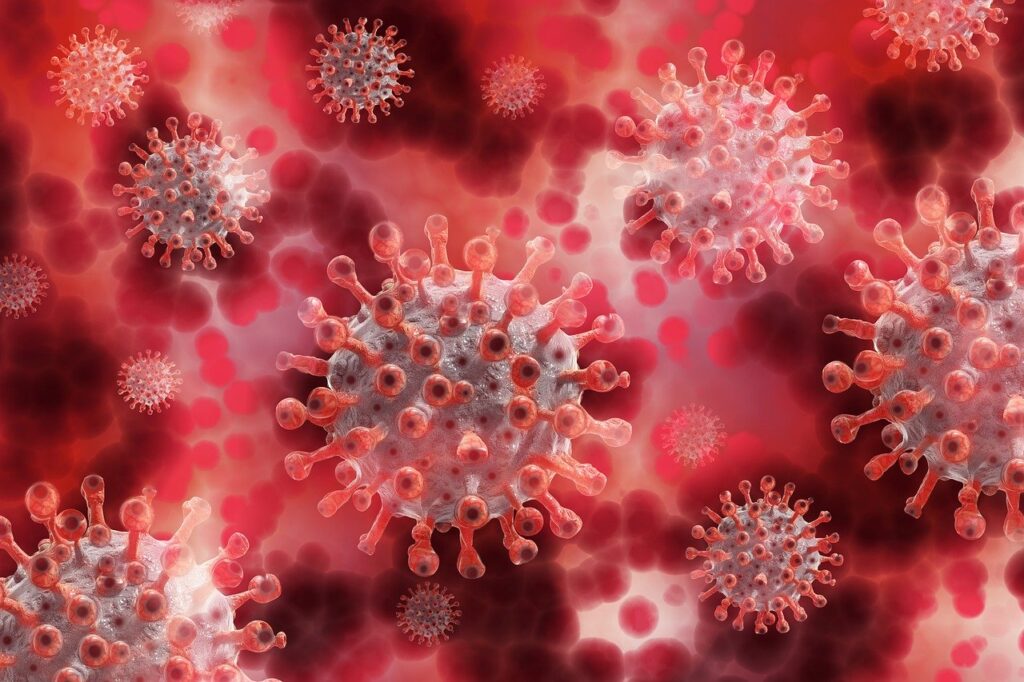Background: In 1796, Edward Jenner first used material from Cowpox pustules to generate immunity to Smallpox in humans, leading to the eventual eradication of the disease globally in 1980. Since then, we have massively increased our understanding of the immune system and virology, developed techniques to manipulate the genetic material of viruses, and learned how to create vaccines not only from live viruses, but by altering them and harnessing specific components of the viral particles themselves to create immunity. While there are now many paths to creating a vaccine, some are for more established than others. Traditionally there are four main categories of vaccines: Live-attenuated, Inactivated, Subunit / recombinant, polysaccharide / conjugate, and Toxoid. Recent advances in technologies have lead to the creation of several new categories, including Nucleic Acid (DNA or RNA) and recombinant vector vaccines. Currently there are over 100 efforts underway to develop a vaccine against COVID-19 using these techniques. When evaluating the potential impact on the pandemic of a COVID-19 vaccine, it is important to keep in mind the category into which it falls. A vaccine in the newly established world of Nucleic Acid Vaccines is more likely to have more problems during the R&D and manufacturing processes as compared to one that uses long-established techniques such as is the case with the Measles, Mumps, and Rubella (MMR) vaccine. Progress in any vaccine development program is to be celebrated, however optimism must be tempered with an honest assessment of future hurdles which can affect the overall impact of a new vaccine on the outbreak. Here is a brief overview some of the vaccine categories with attention focused on relevance for COVID-19 vaccine efforts. For detailed information on ongoing vaccine projects this publication from WHO, which is up-to-date as of May 19, 2020 is recommended.
https://www.who.int/who-documents-detail/draft-landscape-of-covid-19-candidate-vaccines
Live-attenuated Vaccines:
This category of vaccines uses a weakened version of the germ that causes a given disease. They are well-established, extremely effective, and are some of the most common vaccines with which the general public is familiar. The weakened version of a virus is given to a person which causes an immune response against that virus. When they are subsequently exposed to the full-strength germ, they are already protected against it. Some examples are the MMR, Smallpox, and Chickenpox vaccines. Of particular concern with this type of vaccine is that there can be a risk that the process used to weaken the germ may not be 100% effective, they can be dangerous to those with compromised immune systems including the elderly, and global distribution is problematic as they need to be temperature controlled which may limit rapid distribution in emergency situations.
COVID-19 Vaccine Research: There are only a handful of vaccines being researched within this category and those efforts are currently in the preclinical stage which means testing is done in the laboratory and in animals. Three known projects are being conducted by Codagenix/Serum Institute of India, Indian Immunologicals Ltd/Griffith University, and the DZIF – German Center for Infection Research. Considering that COVID-19 is particularly dangerous to the elderly safety must be a particular priority during the research and development phases.
Inactivated Vaccines:
This is another category that is well established with a long history of success and with which the public will be quite familiar. These vaccines use germs that have been treated so that they are no longer able to cause infection. Scientist do not use the terms “alive” nor “dead” when describing viruses, hence “inactivated”. Some examples include the vaccines against Rabies, Polio, and the annual Influenza virus. While these vaccines are extremely safe, they often do not bring about immune responses as strong as is seen with live-attenuated vaccines. Therefore, they often require boosters shots or administrations to maintain immunity in an individual and in the overall population.
COVID-19 Vaccine Research: There are three Inactivated Vaccine candidates in human Phase 1/2 clinical trials. These trials test that the vaccines are both safe and effective in small numbers of people. Usually, safety is first assessed and then efficacy tests follow, however combining these tests helps accelerate development timelines. These candidates are being tested in China by Sinovac, Sinopharm, the Wuhan Institute of Biological Products, and the Beijing Institute of Biological Products. Three other Inactivated Vaccine candidates are in the pre-clinical research phase. These candidates are expected to be safer than Live-attenuated vaccines, however the potential need for multiple vaccine doses could be problematic in a race to generate global immunity to COVID-19.
Subunit Vaccines:
Subunit vaccines are designed so that they use just a component of the germ. This component may be a protein that makes up part of the viral particle or polysaccharide (sugar) which is found on the outside of the particle. These vaccines are usually much safer than those using the whole germ (attenuated or inactivated) and as such are the main focus of current vaccine research. A major drawback of subunit vaccines is that it can be difficult to predict which components will cause the strongest immune responses leading to longer development times. Additionally, long-term immunity (also known as memory responses) may be difficult to achieve resulting in the need for periodic boosters. A common example of a Subunit Vaccine is the Hepatitis B vaccine that requires as many as three shots to induce immunity.
COVID-19 Vaccine Research: A large number of the COVID-19 vaccine efforts are related to Protein Subunits. In particular, the Protein Spike which is characteristic of the family of viruses (by generating the “crown” appearance) is a favored target of research. Vaccine PTY in Australia is a company with pre-clinical research ongoing in this space that also uses and adjuvant to increase the potency of the immune response. The spike protein and many other targets are being researched by private institutes, government research labs such as USAMRIID, and academic research institutes. These are all in the pre-clinical stages.
Recombinant Vector Vaccines:
Recombinant Vector Vaccines represent some of the most advanced technology available in Virology and Molecular Biology. These vaccines take a virus (the viral platform) that is typically harmless, or has been modified to be so, and inserts part of the disease causing germ’s genome into them. The inserted DNA makes a protein that can be thought of as “the payload”. The new altered “recombinant” virus is then used to infect a person with an active or inactive version of the virus. If the new virus is active then it produces proteins of the target disease in the healthy person, which are then recognized by the immune system. When a person is then infected with the real disease causing virus, the immune system recognizes the threat and mounts a response. This approach has been used successfully in recent years to create one of the current Ebola vaccines which uses a close relative of the Rabies virus called VSV to deliver its payload. The difficulties with this approach are that they are technically very difficult to create, it is difficult to predict what part of the disease causing virus will generate the best responses (as is the case with subunits), and there are risks of unexpected reactions to the viral platform in those that receive the vaccine. Scale-up activities are also still being explored as there are few mass produces members of this category. Another interesting problem is that of pre-existing immunity to the viral platform. If a person is immune to the vector then it may be eliminated before a specific immune response can be made to the payload target of the disease causing virus. In the case of inactive recombinant viruses, the payload protein has been incorporated into the new viral particle. When the inactive virus is injected into a person, their immune response recognized this foreign protein and will react against it when the dieses causing germ infects them.
COVID-19 Vaccine Research: Multiple projects are underway in both the Active and Non-active sub-categories using a range of viral platforms. The university of Toronto is testing a COVID-19 vaccine in pre-clinical trials that uses VSV in way similar to the effective Ebola vaccine. Other groups are leveraging modified Influenza and Measles viruses in their efforts. With many viral platforms available, this could be a promising line of research resulting in multiple vaccines. However, safety concerns, pre-existing immunity, and manufacturing scale-up could all be prohibitive issue to be overcome.
Nucleic Acid Vaccines:
DNA and RNA based vaccines also represent the vanguard of scientific knowledge and vaccine research. DNA codes for proteins with RNA serving as an intermediary blueprint for a given protein. When the exact sequences of the nucleic acids are known for a protein, it is possible to create those sequences and insert them into cells. These cells then produce that desired protein, which when used for vaccines, creates one for the disease causing germ. Per the other techniques discussed, this protein is then recognized by the immune system and an immune response is generated. Advantages of this technique are extreme specificity in designing the targets and the ability to make alterations to the proteins that may augment the immune responses. Similar issues and concerns regarding selecting a suitable germ causing protein, the duration of the immune response and need for bootsters, and scale-up manufacturing exist for this category as for others. An additional concern is that of unknown side-effects. Gene therapy efforts suffered major setbacks in the 90’s and 20’s due to this issue and it needs to be accounted for in this case.
COVID-19 Vaccine Research: Some of the more recent high-profile news reports regarding COVID-19 vaccines are related to this category. Bill Gates has activity praised the RNA-based vaccine approach of Pfizer which has four candidates. The Moderna RNA-based vaccine candidate in Phase 1 showed positive interim results in a small number of test subjects moving the US stock markets significantly on May 18th. In addition to these programs there are many other efforts ongoing in the nucleic acid space. Whether these new and highly innovative efforts will result in safe and effective vaccines in a timely manner remains to be seen. If they are successful, mass scale-up to make such vaccines available globally will a massive endeavor.
In Conclusion: Here we have clearly seen a wide range of approaches for vaccine development from the tried and true to the cutting edge of science. The more tools available to medical professionals to prevent and treat disease the better. While some of these approaches are sure to be fruitless for dealing with the ongoing COVID-19 pandemic, our efforts now may help vaccine research for different diseases in the future. Previous efforts to develop a SARS vaccine in 2003 were abandoned when that virus disappeared. Had they continued, the learnings would likely be useful now, especially those related to DNA based approaches, as SARS is closely related to COVID-19. In the near-term business leaders, government officials, and individuals should have some understanding of the types of vaccines being researched and what they potentially mean for our ongoing pandemic responses, how we manage the re-opening of the economy (especially is it relates to reliance on a vaccine), and potential investment opportunities for investment in the vaccine research space. Not all vaccines are created equally, though they are all intelligently designed.

